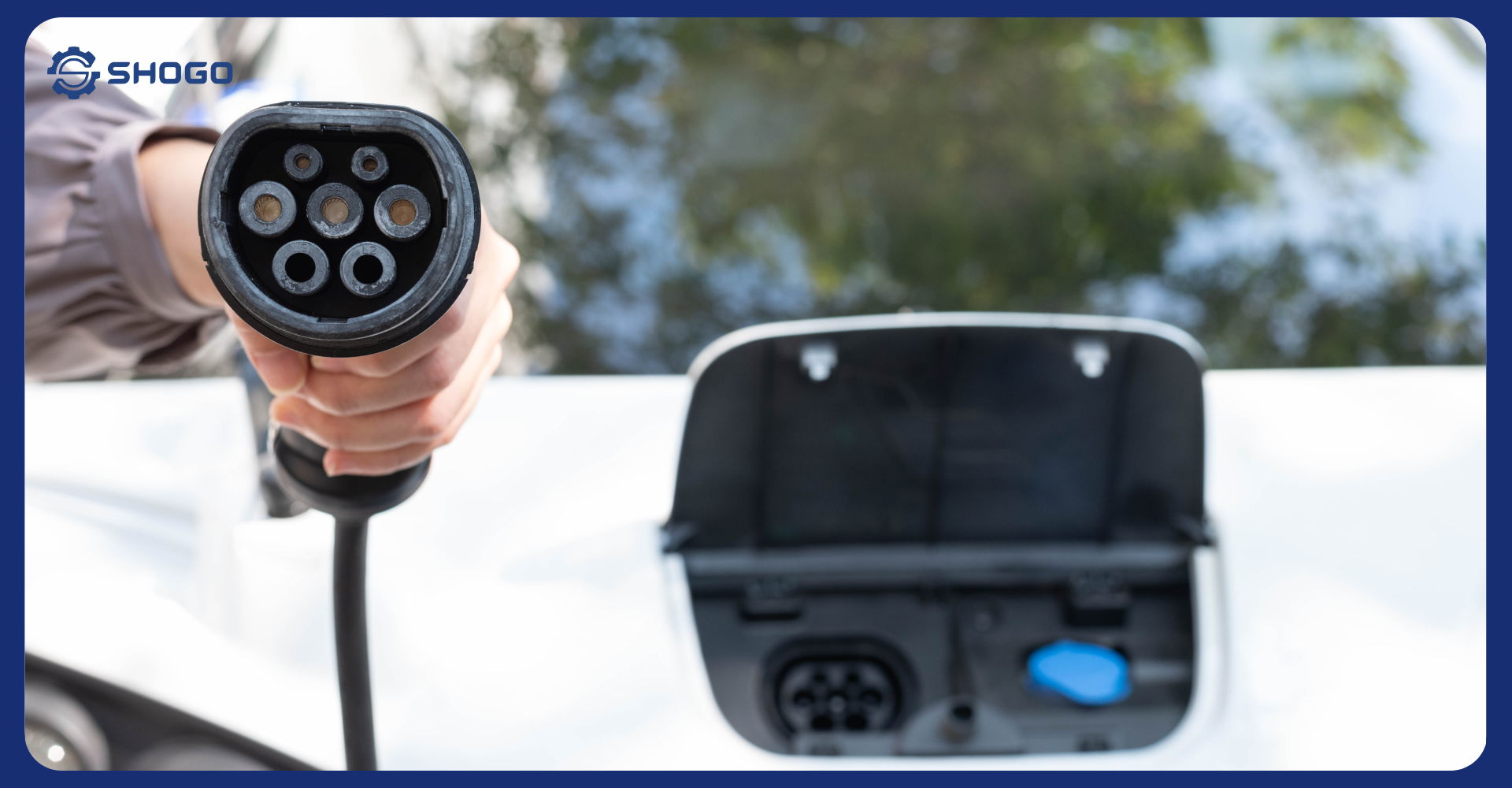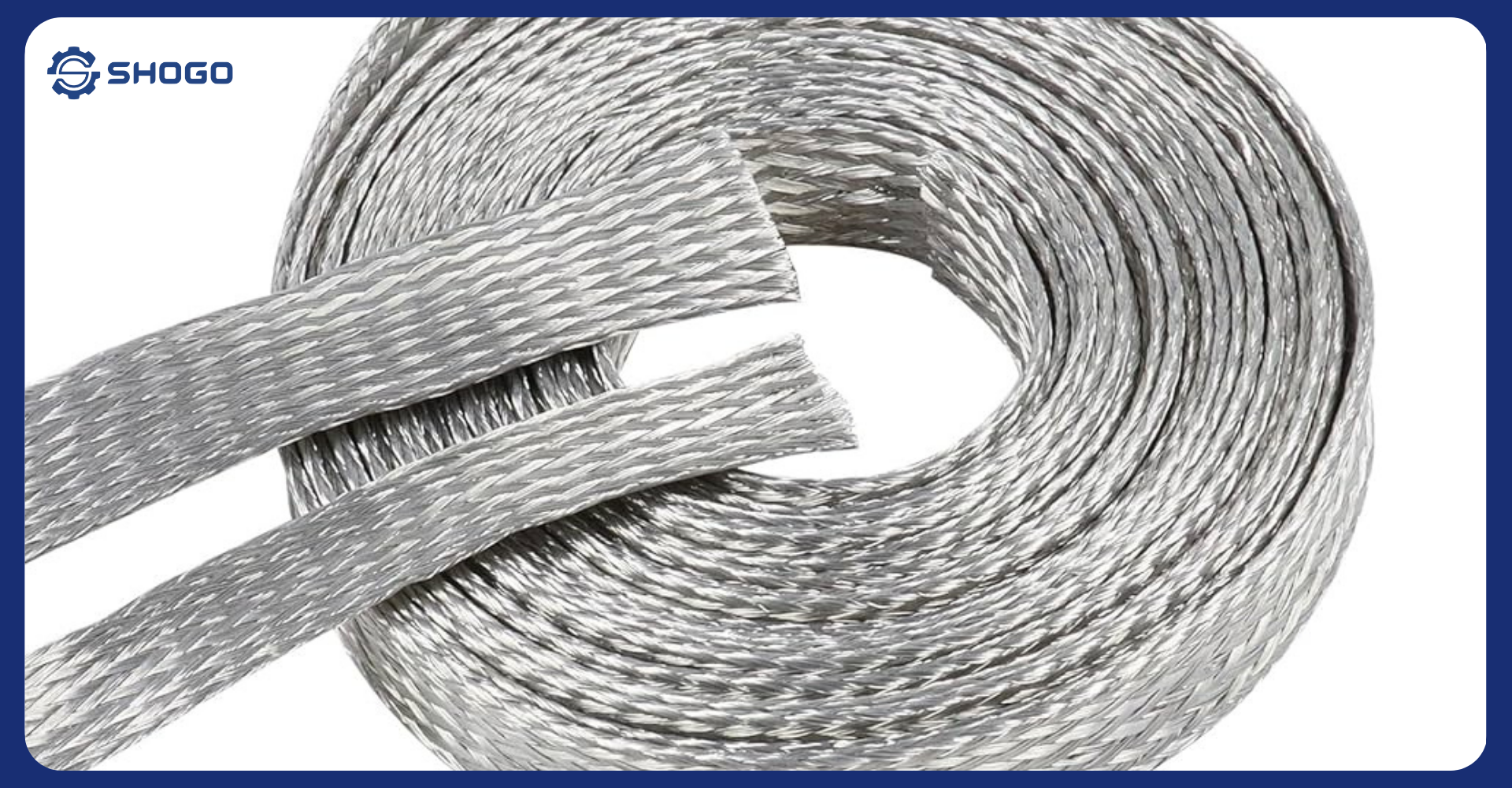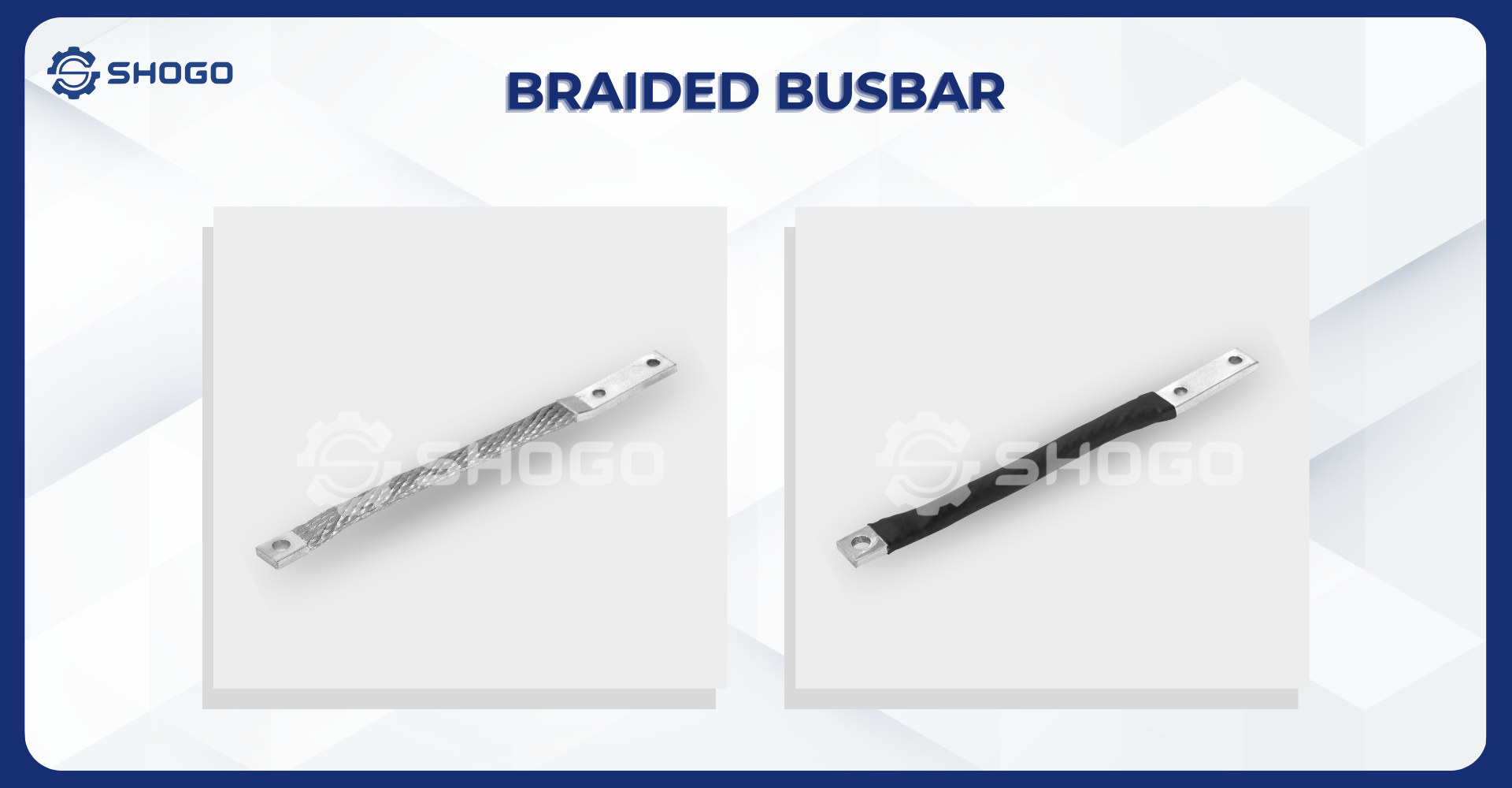
1. What is a braided busbar?
Braided busbar is a type of electrical conductor used to conduct electricity and connect electrical equipment in an electrical system. It is composed of many layers of flat stranded copper wire stacked on top of each other or in parallel to achieve the required cross-sectional area or required conductivity density, creating high flexibility and flexibility.
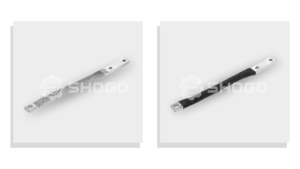
2. Structure of Braided Busbar
Detailed structure:
Core:
- Made from many layers of flat braided copper wire.
- The number of layers of stranded wire depends on the current-conducting capacity requirements of the busbar.
- Wire material is usually C11000 copper (99.95% pure copper) to ensure good conductivity.
Coating:
- May or may not be available depending on usage requirements.
- If present, the cover is usually made of insulating material such as PVC, XLPE or EPR to protect the core from environmental factors and increase safety.
Connector:
- The two ends of the braided busbar are pressed with sturdy hydraulic clamps (terminals).
- Cosse may or may not have holes for attachment to busway systems or other electrical equipment.
- Size, design and specifications can change according to design requirements.
3. Classification of Braided Busbars
3.1. Braid type:
- Flat braid: The conductor is braided flat on a flat surface. This type of braid has the advantage of being easy to fabricate and having high stiffness.
- Circular braid: The conductor is braided in a circular shape. This type of braid has the advantage of having high load capacity and being able to transmit power over long distances.
- Spiral braid: The conductor is braided in a spiral shape. This type of braid has the advantage of being highly flexible and can be easily installed in tight spaces.
3.2. Number of conductors:
- Single stranded busbar: Uses only one layer of conductor for braiding.
- Double braided busbar: Uses two layers of conductors for braiding. This type of braid has the advantage of having a higher load capacity and can minimize power loss.
- Multi-layer braided busbar: Uses multiple layers of conductors for braiding. This type of braid has the advantage of having the highest load capacity and being able to transmit power over the longest distance.
3.3. Conductor material:
- Copper braided busbar: Use copper conductors. Copper has high electrical conductivity and good heat resistance, therefore braided copper busbar is the most widely used.
- Aluminum braided busbar: Use aluminum conductors. Aluminum is lighter in weight than copper and is cheaper, so braided aluminum busbars are used in certain applications.
3.4. Load capacity:
- Low current braided busbar: For low current applications.
- Medium current braided busbar: For medium current applications.
- High current braided busbar: For high current applications.
4. Advantage of Braided Busbar
Compared with traditional types of electrical busbars such as solid copper bars or tube copper bars, braided busbars have the following advantages:
- Flexible: Braided busbars can be easily bent and shaped, making them suitable for applications requiring high flexibility. For example, Braided Busbars can be used to connect portable electronic devices or to make electrical connections in electrical equipment of complex design.
- Light weight: Braided busbars are significantly lighter than solid copper bars or tube copper bars with the same electrical conductivity. This makes them ideal for applications that require light weight, such as in the aerospace or electric vehicle industries.
- High electrical conductivity: Braided busbars have a larger surface area than solid copper bars or tubular copper bars of the same size, resulting in better electrical conductivity. This helps reduce power loss and improve system performance.
- Good anti-interference ability: The braided busbar has a mesh structure that helps reduce electromagnetic interference (EMI) and high frequency interference (RFI). This makes them an ideal choice for applications that are sensitive to interference, such as in communications or medical equipment.
- Easy to install: Braided busbars can be easily installed using basic methods such as welding, clamping or screws. This saves installation time and costs.
- High durability: Braided busbars are highly resistant to corrosion and wear, giving them a long life.
- Reasonable cost: Braided busbars are often cheaper than solid copper bars or tube copper bars with the same electrical conductivity.
In addition, braided busbars also have a number of other advantages such as:
- Can be used in harsh environments
- Can be used in applications with limited space
- Can be easily repaired and maintained
Overall, Braided Busbars are a good choice for applications requiring high flexibility, light weight, high electrical conductivity, good anti-interference ability, easy installation, high durability and reasonable cost.
5. Application of Braided Busbar
Braided busbars are widely used in many different fields, including:
- Electricity industry: Braided busbars are used in transformer stations, power plants, electrical cabinets, power distribution systems,…
- Industry: Braided busbars are used in industrial equipment such as forklifts, robots, automation machinery,…
- Construction industry: Braided busbars are used in high-rise buildings, elevator systems, lighting systems,…
- Transportation industry: Braided busbars are used in trams, trains, airplanes,…
In addition, braided busbars are also used in many other applications such as medical equipment, solar cells, renewable energy systems,…
Some specific examples of applications of braided busbars:
- Transformer connection: Braided busbars are used to connect transformers together, helping to transmit power efficiently and safely.
- Connecting electrical cabinets: Braided busbars are used to connect electrical equipment in electrical cabinets, helping to distribute power to different locations in the system.
- Electric motor connection: Braided busbar is used to connect the electric motor to the power source, helping to provide power for the motor to operate.
- Making ground wire: Braided bus bars are used to make ground wire for electrical equipment, helping to protect equipment from electric leakage and lightning strikes.
6. Some notes when using braided busbars
Material selection:
- Choose materials suitable for the application and usage environment. For example, brass has high electrical conductivity and good corrosion resistance, but has a high cost. Aluminum is cheaper but has lower electrical conductivity.
- Determine the appropriate size based on the current and voltage that will pass through the busbar.
- Use high quality insulating materials to ensure safety and performance.
Installation:
- Secure the guide with a suitable bracket or clamp.
- Make sure connections are soldered or clamped tightly to avoid electrical leakage.
- Use specialized tools to install and maintain guide bars.
Use:
- Avoid letting the guide bar come into contact with other conductive materials.
- Do not use overloaded guides.
- Regularly check the guide bar to detect damage and repair it promptly.
Safety note:
- Cut off the power source before installing, maintaining or repairing the busbar.
- Wear appropriate personal protective equipment when working with guide bars.
- Do not touch the bar while it is energized.
- Keep the area where the guide bar is installed ventilated and dry.
7. Conclusion
Braided busbar is a flexible, efficient and advantageous type of electrical conductor, widely used in electrical and electronic systems. Proper selection and use of Braided Busbar will contribute to improving the operational efficiency and safety of the electrical system.
Why choose SHOGO Viet Nam?
1. Quality Commitment: SHOGO Viet Nam.,JSC is the No.1 Busbar and Cable manufacturer in Viet Nam for the new energy industry. We are committed to providing our customers with products of the highest quality standards. All raw materials are inspected for quality before production, and 100% of products are thoroughly inspected before delivery. SHOGO Viet Nam holds prestigious certificates: IATF16949-2016, ISO 9001-2015, ISO 14001-2015, ISO/IEC 17025-2017,…
2. Competitive Pricing: With a team of experienced engineers who have participated in many electric vehicle production projects, SHOGO Viet Nam can provide product consulting to help customers optimize production costs and improve product quality. With a geographical location that is convenient for trading, along with modern machinery and technology, SHOGO Viet Nam can provide products at the most competitive prices on the market.
3. Dedicated Service: With a team of experienced employees, large production capacity and reasonable supply, SHOGO Viet Nam always ensures on-time delivery for customers. Support customers in all projects, quickly handle arising problems.
You can refer to some of our Busbar products on the page PRODUCTS
To receive FREE CONSULTATION on our products, Busbar design and manufacturing services, please CONTACT
Email: info@shogovn.com / info@shogobusbar.com
Whatsapp / Wechat / Zalo : +84 989538022 / +84 393929885

